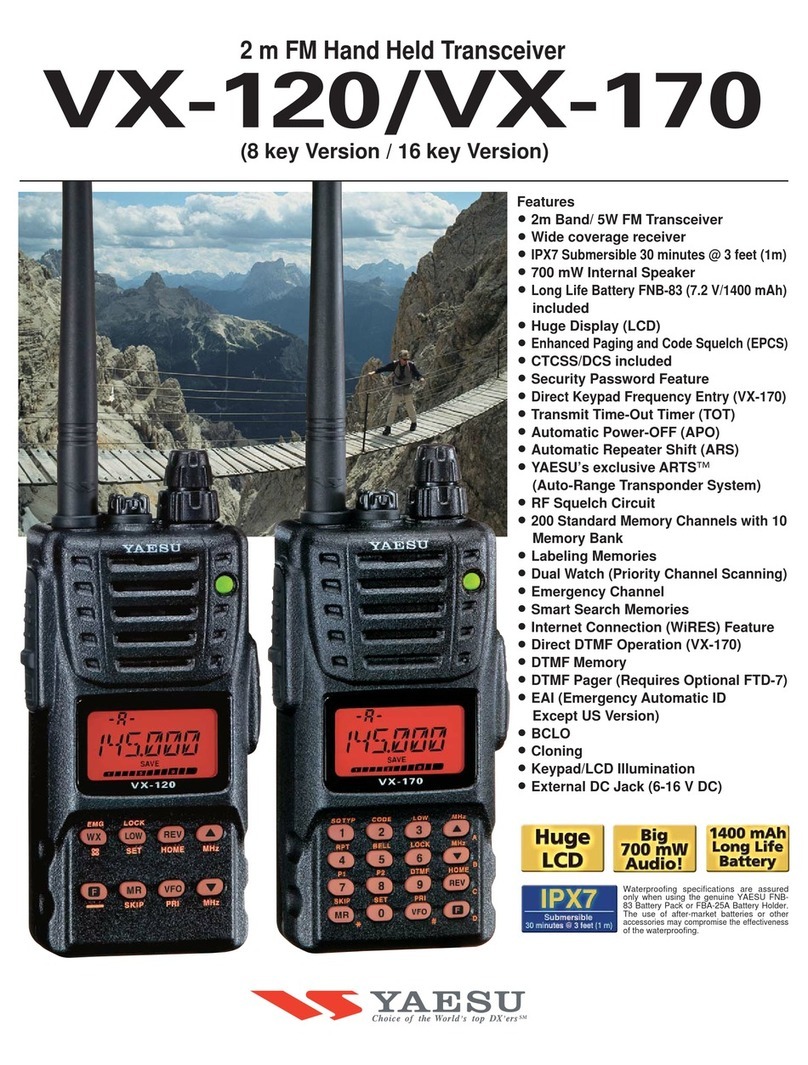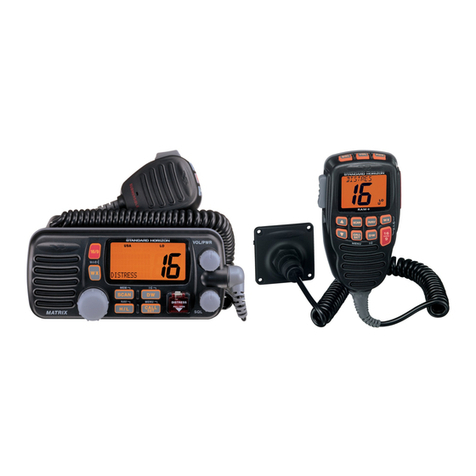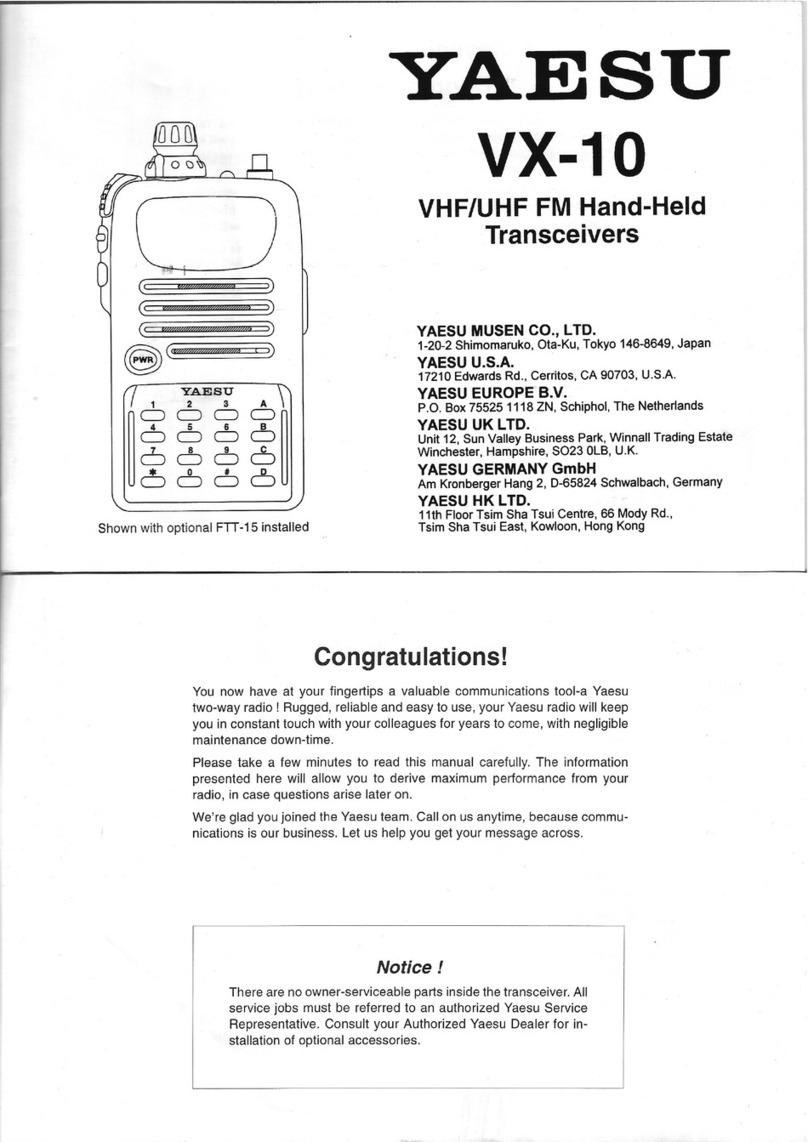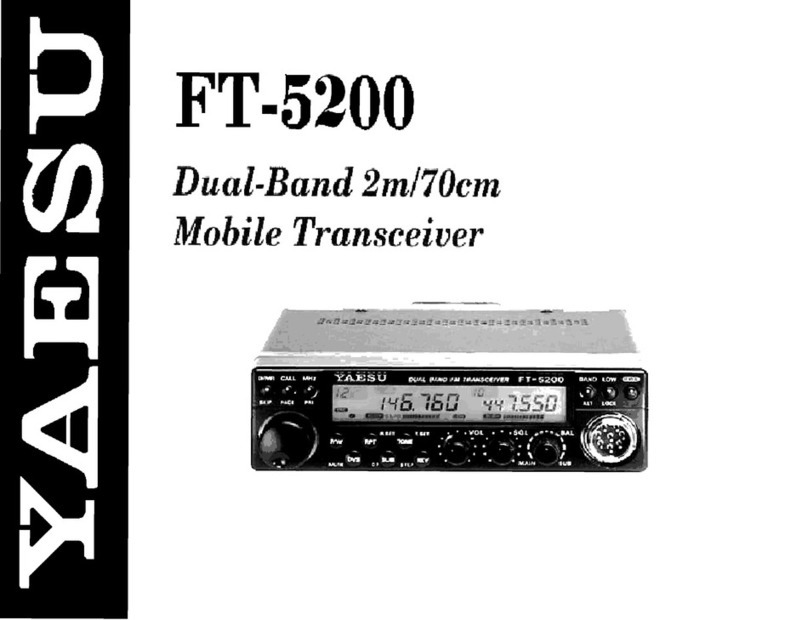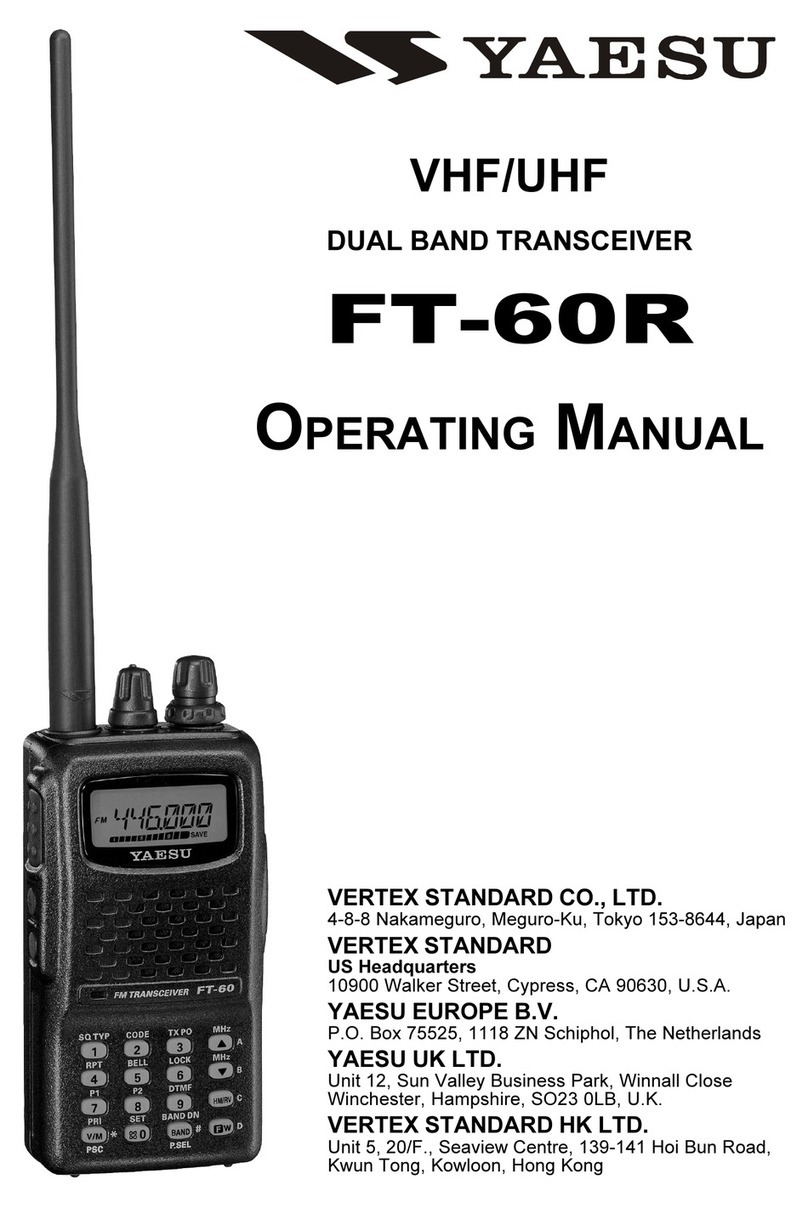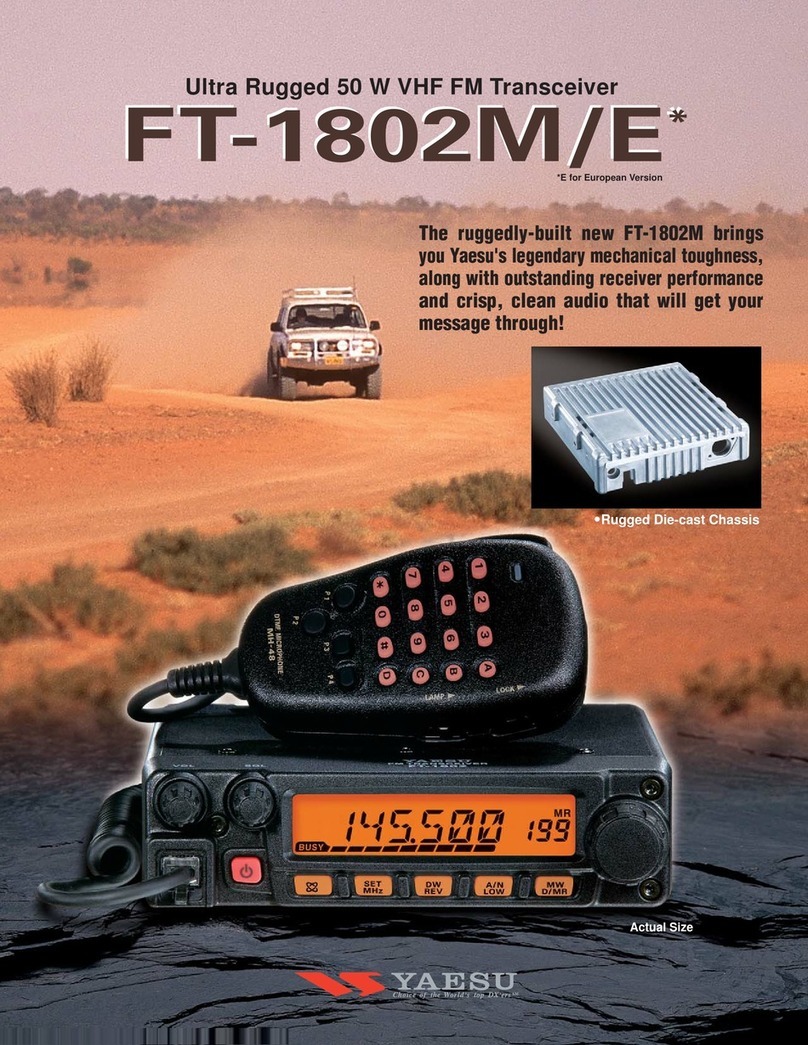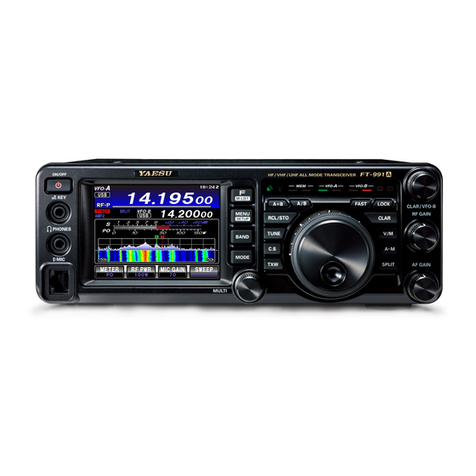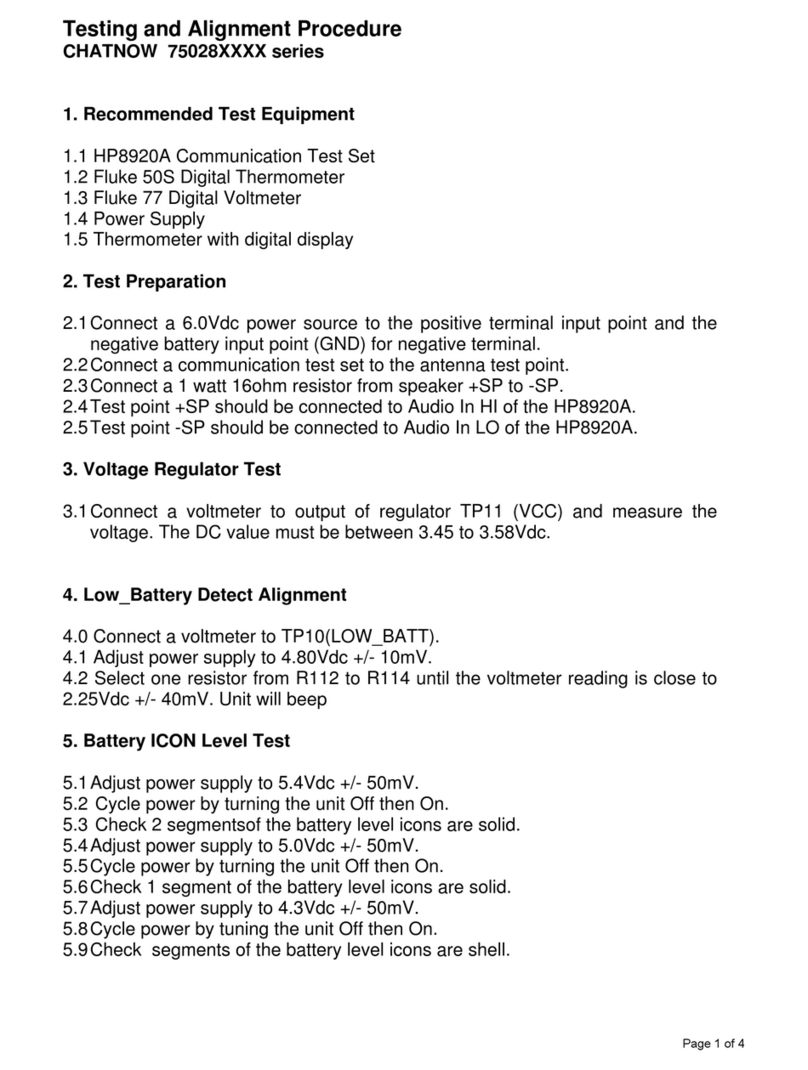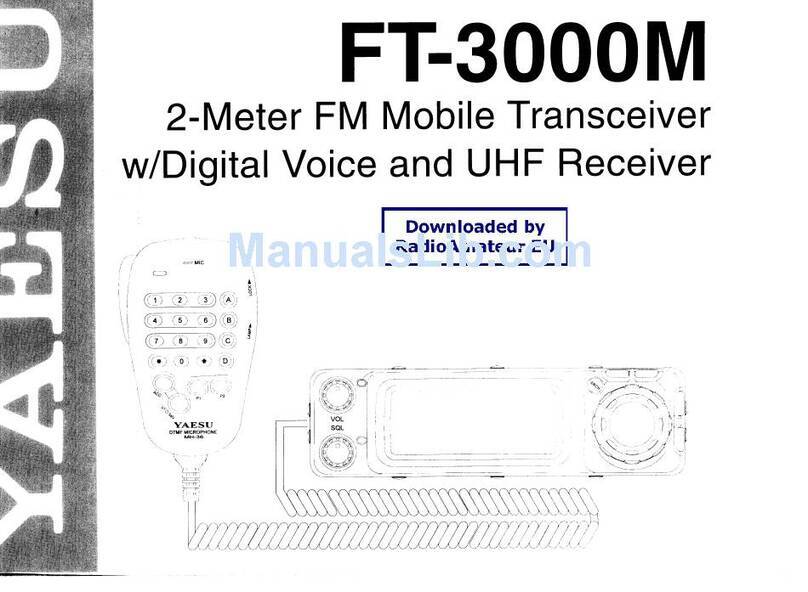
Contents
Scanning............................................................29
VFO Scanning ...............................................30
Manual VFO Scan .....................................30
Programmed VFO Scan.............................30
Memory Scanning..........................................31
How to Skip (Omit) a Channel
during Memory Scan Operation ................31
Preferential Memory Scan.........................32
Memory Bank Scan ...................................33
Programmable (Band Limit) Memory Scan
(PMS).............................................................34
“Priority Channel” Scanning
(Dual Watch)..................................................35
Automatic Lamp Illumination
on Scan Stop ..................................................37
Band Edge Beeper .........................................37
Weather Alert Scan ........................................38
Emergency Channel Operation ......................39
Smart Search Operation..................................40
ATS
(Automatic Transponder System)
.....................41
DTMF Operation .............................................43
Miscellaneous Settings.....................................46
CW Identier Setup .......................................46
Password........................................................47
Changing the Channel Steps..........................48
Receive Battery Saver Setup .........................48
TX Battery Saver ...........................................49
Transmitter Time-Out Timer (TOT) ..............49
Busy Channel Lock-Out (BCLO)..................50
DCS Code Inversion......................................50
Changing the TX Deviation Level.................51
Reset Procedures ..............................................52
Set Mode ...........................................................53
Specications ....................................................63
General Description ...........................................1
Accessories & Options .......................................2
Controls & Connections ....................................3
Top & Front Panel ...........................................3
LCD .................................................................4
Installation of Accessories .................................5
Antenna Installation.........................................5
Installation of FNB-124LI Battery Pack..........5
Battery Charging..............................................6
Low Battery Indication....................................6
Belt Clip Installation / Removal ......................7
Operation............................................................8
Switching Power On and Off...........................8
Adjusting the Audio Volume Level .................8
Squelch Adjustment.........................................8
Frequency Navigation......................................9
Transmission..................................................10
Advanced Operation........................................11
Keyboard Locking .........................................11
LCD Illumination...........................................12
Disabling the Keypad Beeper ........................12
RF Squelch.....................................................13
Checking the Battery Voltage ........................13
Repeater Operation..........................................14
Repeater Shifts...............................................14
Automatic Repeater Shift (ARS)...................14
Manual Repeater Shift Activation .................15
CTCSS/DCS Operation...................................17
CTCSS Operation ..........................................17
DCS Operation...............................................18
CTCSS/DCS Bell Operation..........................19
Split Tone Operation......................................20
Tone Calling (1750 Hz) .................................21
Memory Mode ..................................................22
Memory Storage ............................................22
Storing Independent
Transmit Frequencies (“Odd Split”)..........22
Memory Recall ..............................................23
HOME Channel Memory ..............................23
Labeling Memories........................................24
Enable the Memory
Alpha-Numeric Tag display...........................24
Memory Offset Tuning ..................................25
Deleting Memories ........................................26
Memory Bank Operation ...............................26
Moving Memory Data to the VFO ................27
Memory Only Mode ......................................27
Weather Broadcast Channels .........................28
cover_130313.indd 2 2013/03/13 17:32:04



